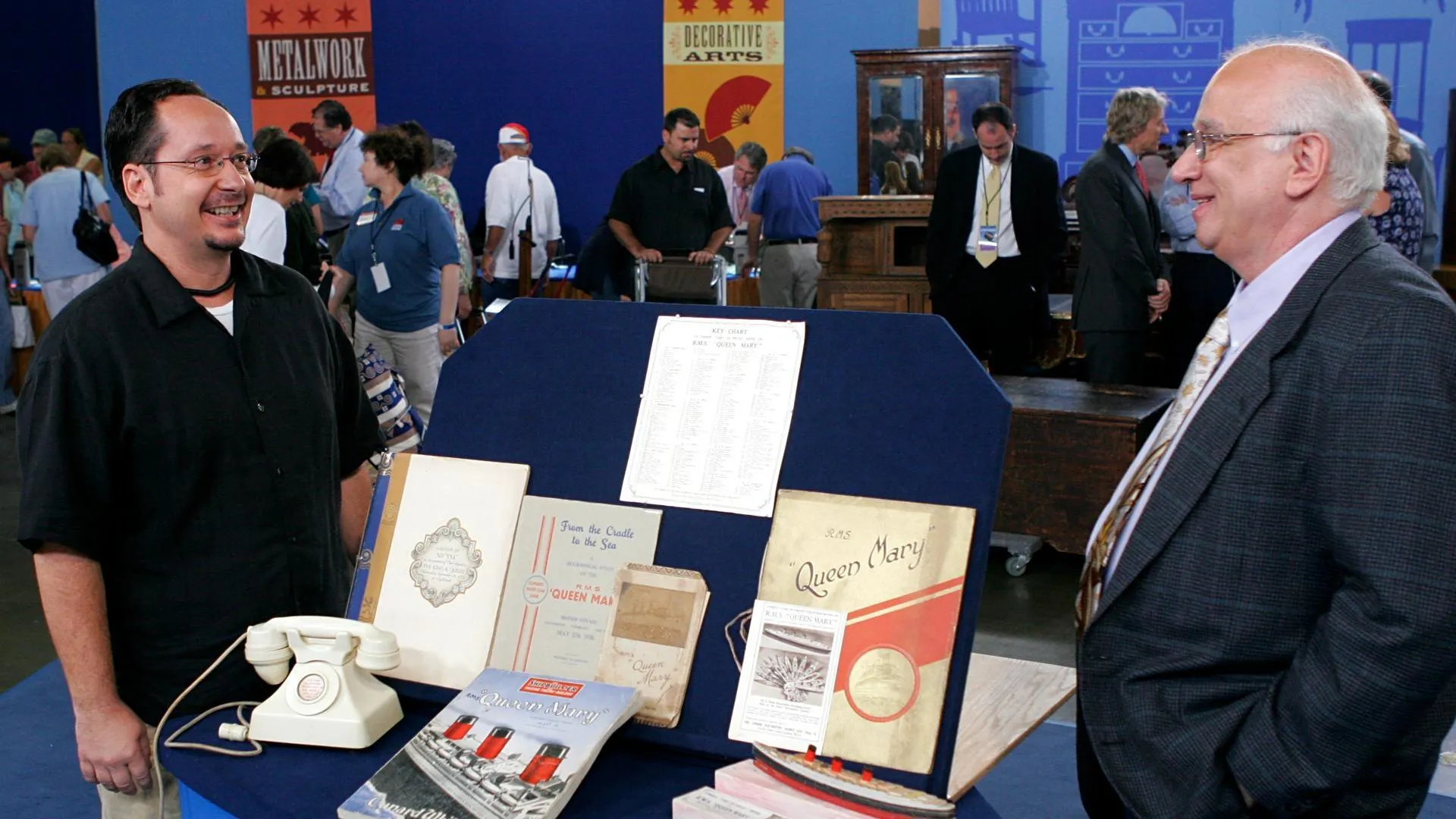GUEST: It was my mother's table. She bought it in the 1970s.
APPRAISER: Okay. And this is your mother here?
GUEST: This is my mother. Her name is Marguerite Piazza. She was a famous singer in the 1950s and '60s. She was at the Metropolitan Opera in New York, and also on television from '50 to '54 on "Your Show of Shows."
APPRAISER: This is a bureau plat, or writing table. And these bureau plats were very popular and important pieces of furniture in 18th-century Europe. The style of this is the Louis XV style. King Louis XV lived from about 1710 to 1774, and artists such as Riesener and Josef and other great “ébénistes,” or cabinetmakers, made furniture for the royal family. It was just incredible, incredible quality. If we look at this bureau plat, the Rococo movement, or Louis XV style, is about the use of natural components like leafage and sea scrolls, asymmetry. These metal mounts literally conform to the beautiful curves of the sides of this tulipwood, or kingwood, case. If you look over here, these corner mounts, you'll see the chisel marks of the brass. Now, one of the things we do when we try to authenticate a piece and see if it's 18th century or 19th century or later, is look at these details. And if you look here, you don't see a lot of cracks or separation in the wood.
GUEST: Mm-hmm.
APPRAISER: Not a lot of shrinkage cracks, which you normally expect for an 18th-century piece. And also if we look at her, in the 18th century, ormolu mounts like this were really finely done, and the hair was incredibly well chiseled and detailed. And this is a little more crude than you'd expect yet it's still beautiful. Also, they used fire gilding back in the 18th century. It was a process of once they carved the figure, they cast their bronze or brass mount, they would brush it with a mercury liquid, heat it up, and then it would glisten and sparkle on all these mounts. And we don't see the evidence of that. If we pull out the drawer... We always want to look at the construction and the innards. And you see here? Those two dowel holes right there? Well, that's not the right construction for the 18th century. It should be mortise and tenon, or dovetail. And if we turn it over, you can see here it's pretty smooth. This is probably cut with a machine. And then we have here this stain that's been put on here on this open edge. So, that's one of the clues that we look for. This style, Louis XV style furniture, was very popular in the 19th century, it was also popular in the 20th century, throughout the 1940s and '50s, which is when I think this was probably made, the first half of the last century. Now, we don't really know exactly which country this was made in. It was probably made in Europe, possibly in France, but they did make a lot of these tables in the 20th century in Spain. But why was it popular? Because it's so elegant, it makes quite a statement. Why do you think your mother bought this?
GUEST: My mother's a very dramatic person, so she likes dramatic pieces. And I don't know where she bought it, probably from a dealer.
APPRAISER: From a dealer? Okay. Do you know what she paid for it?
GUEST: She can't remember exactly, but something in the range of $4,000.
APPRAISER: Well, this is a very theatrical piece. It's about drama and theater. And, uh, I would say if you were pricing this in a retail shop in New York, I think that a dealer could ask around $12,000, maybe $14,000 for this.
GUEST: Oh, wow.
APPRAISER: So it's a beautiful piece, thank you.
GUEST: Well, thank you very much.












